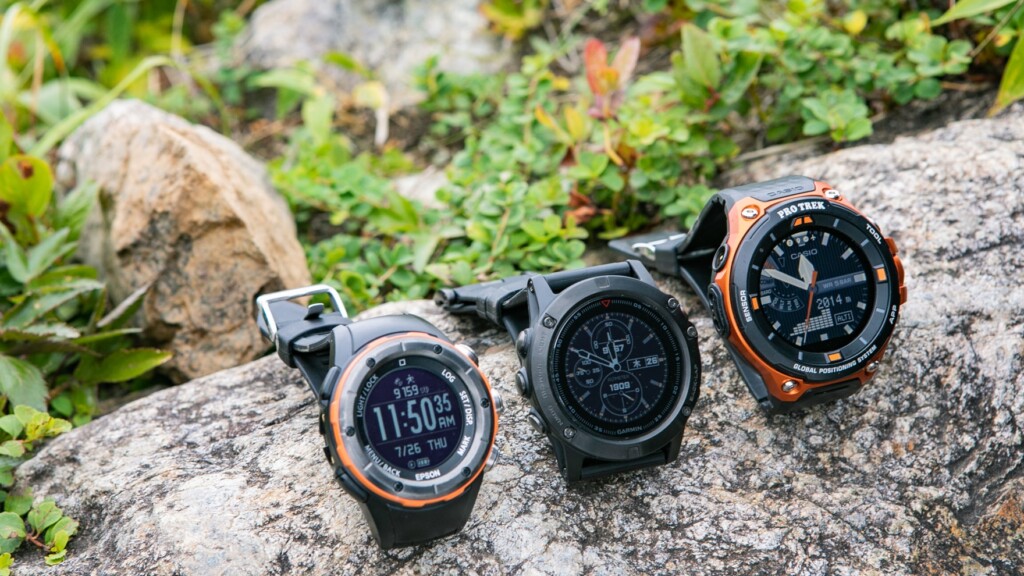
Purchase Guide: After trying out all CASIO, GARMIN, and EPSON, we found out the best solution for outdoor watches with GPS for each purpose [Part 1]
table of contents
4. OPERATING AND INTERFACE - Once you get used to the touch panel operation, everything else becomes a hassle
Operating the watch is frequently occurring in outdoor watches where you can not only look at the watch, but also check various information and set functions. Therefore, high operability and simplicity of settings are important.
The first thing that stood out in this respect was the WSD-F20 with the "3 buttons + touch panel LCD". Of the three buttons on the right, the up and down buttons simply call up the main preset functions (by default, various sensor checks and map display), so virtually all operations are only used by the "menu call button" and the touch panel. Of course, this may give a different impression to people who are not used to touch screens, but in these days, there are many people who are used to the smartphone interface, it is sure to make this operation easier.
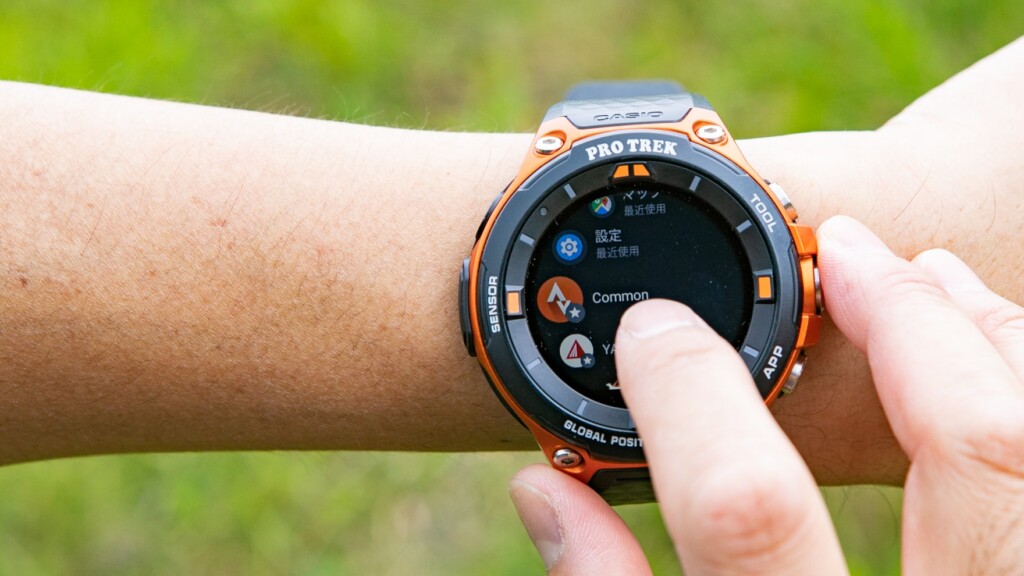
It's a bit slow if there's no memory left, but the operation is smooth and the touch panel is also very sensitive.
On the other hand the fenix 5x and MZ-500 require a variety of use of five buttons placed on the left and right to invoke and set up many complex functions. In particular, it is difficult to intuitively perform each operation with Garmin, so you must first take your time to "memorize" the names of the functions, the location of the menus, and the respective operations. Personally, I find it difficult to do the quirky operation of "long-pressing the button" at various times. This is just a relative story.
The iconic operation was on the map screen. Let's compare them.
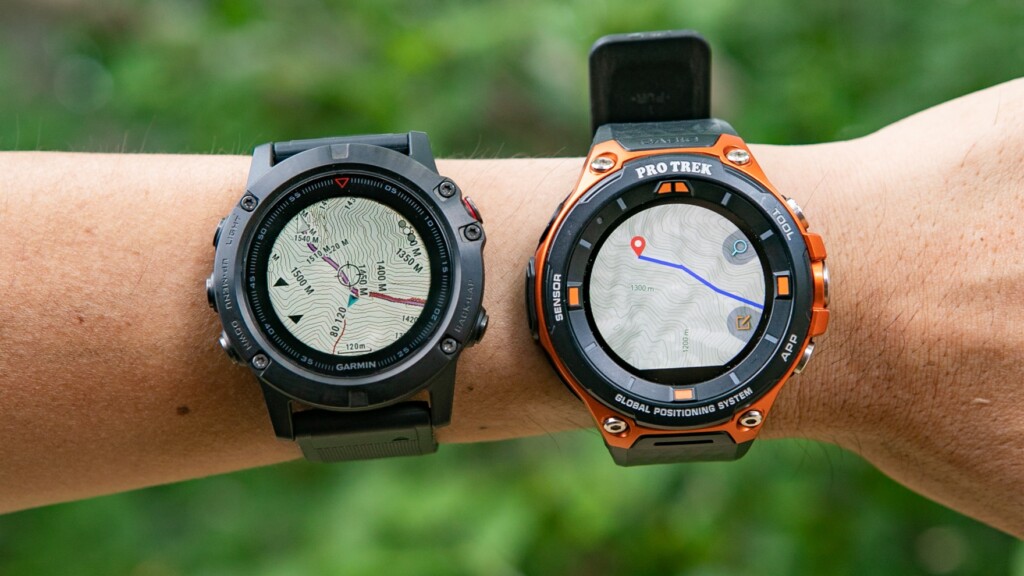
On the left is Garmin's map control. Scroll the map little by little using the middle and bottom left buttons. You can operate the Casio map on the right using either the touch panel or the button, making it much easier to operate.
the WSD-F20 , you can just tap the buttons on the screen (it's not shown in the photo, but the "+" and "-" buttons appear on the screen, and you can zoom in and out by tapping it), or using familiar operations, such as swipe, pinch-in, or pinch-out. the fenix 5x , you can first display the map, but if you want to change the scale of the map, you will need to press and hold the menu button → change scale → change scale using the menu (UP) or DOWN button. Furthermore, if you were thinking of scrolling through the map, press the "upper right button" to change to either left or right or up/down movement mode, then use the UP/DOWN button to move it little by little... I would like the interface to be improved, which will reduce the desire to look at maps.
5. Battery life: Strong EPSON, GARMIN's performance, CASIO is on the passing point~
There are a complete answer on battery life based on specs, but in most cases it is just the theoretical maximum value. What more people would like to know is what it is when you use it in a specific activity.
So this time, we compared three tests of a day hike where we started at a fully charged state at the same time, and repeated battery capacity at the finish line. There was no significant difference in trends in all three sessions, so the table below introduces the results of one of them: "Day-trip climbing at Mt. Tanigawa (around 6 hours of its journey), and frequently displaying maps and other things."
| Item name | CASIO PRO TREK Smart WSD-F20 | GARMIN fenix 5x Sapphire | EPSON Wristable GPS for Trek MZ-500 |
|---|---|---|---|
| Official Specifications | 7-9 hours (Accuracy priority, positioning per second, auto-off color display) | Up to 20 hours (training mode + GPS mode + optical heart rate monitor) | Approximately 46 hours (high accuracy mode, GPS per second positioning) |
| Battery capacity at finish | 36% | 63% | More than 24 hours available |
| remarks |
|
|
|
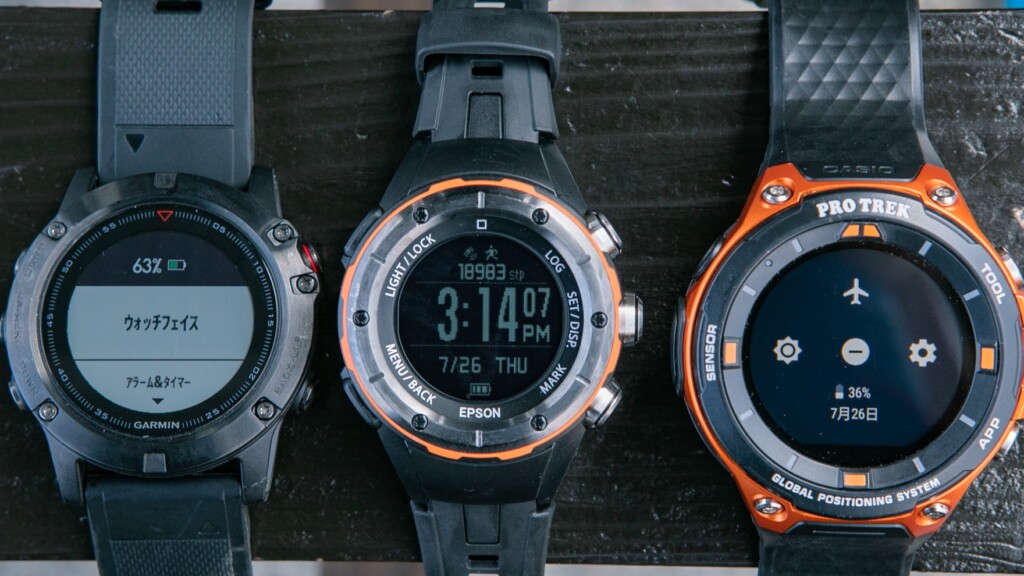
The results of a day trip to Mt. Tanigawa. From left, Garmin was 63%, Epson was still close to full, and Casio was 36%.
As for the results, none of these are practical, but in terms of security, the consumption of the MZ-500 the fenix 5x is often done, but the WSD-F20 (however, if it were to turn on airplane mode, it would have been possible to reduce consumption even more).
Roughly speaking, the battery quality is probably proportional to the ease of viewing of the screen and the usability of the UI. Rather than being superior to the battery itself, it is more emphasised on the clarity of the display and high operability, and as a result, the battery life seems to be at a discount.
The only thing I'm not following is to follow, but the WSD-F20 , which consumes the most battery life, has the secret feature that other two models don't have, "can be used while charging*." If you're in a situation where the battery level is really bad, you can just stretch the cord directly from the mobile battery in your pocket to your wrist and charge it. *All models can be charged while measuring, so to be precise, it can be attached to your arm while charging.
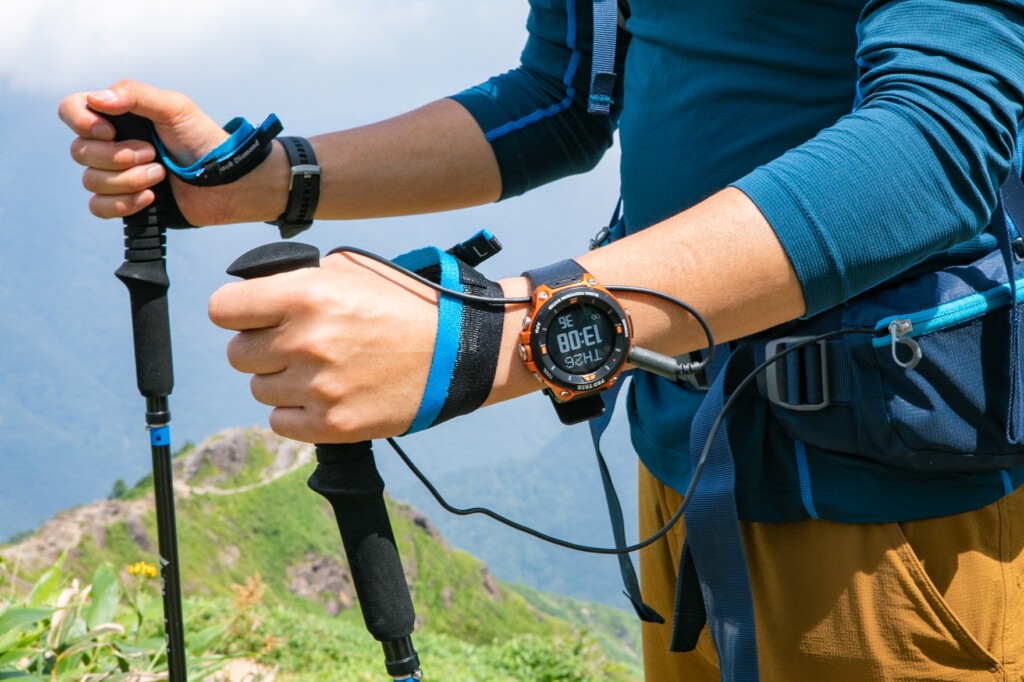
With the WSD-F20, you can put a mobile battery in a hip belt pocket, pouch, or sacoche, and then charge your watch while walking.
Of course, the manufacturer does not particularly recommend it. Personally, stretched cords are clunky and can easily get caught, so I don't recommend them under any circumstances. However, it recovers quite a bit after a few minutes of charging, and there are many models of mobile batteries that are very compact even with large capacity, so I think it's actually a good way to use it. Above all, it is important to be able to devise an emergency method when it is really necessary.
Continued to part 2
So far, I've written about the appearance and general usability in the first half of the comparison review. Next time, we will finally take a deeper look at what you can do outdoors such as hiking, as well as the usability of the apps and sensors.
⇒ Go to Part 2 "6. Functionality and What You Can Do, 7. Accuracy"
[Reference] Comparison table for WSD-F20, fenix 5x Sapphire, MZ-500L specs
*Excerpt from the official websites
We also recommend this article about GPS clocks for mountain climbing.
- First Look: Casio PRO TREK Smart WSD-F20 What is the power of offline maps? I tried using it for a hike right away
- Review: Tips and tips for 100% outdoor use of the Casio PRO TREK Smart WSD-F20, you won't let go, even if you notice it.
- Review: Enjoy the winter outdoors with the winter-style Casio PRO TREK Smart WSD-F20X
- NEWS: SUUNTO has finally released a color LCD/touch panel GPS sports watch. SUUNTO SPARTAN series


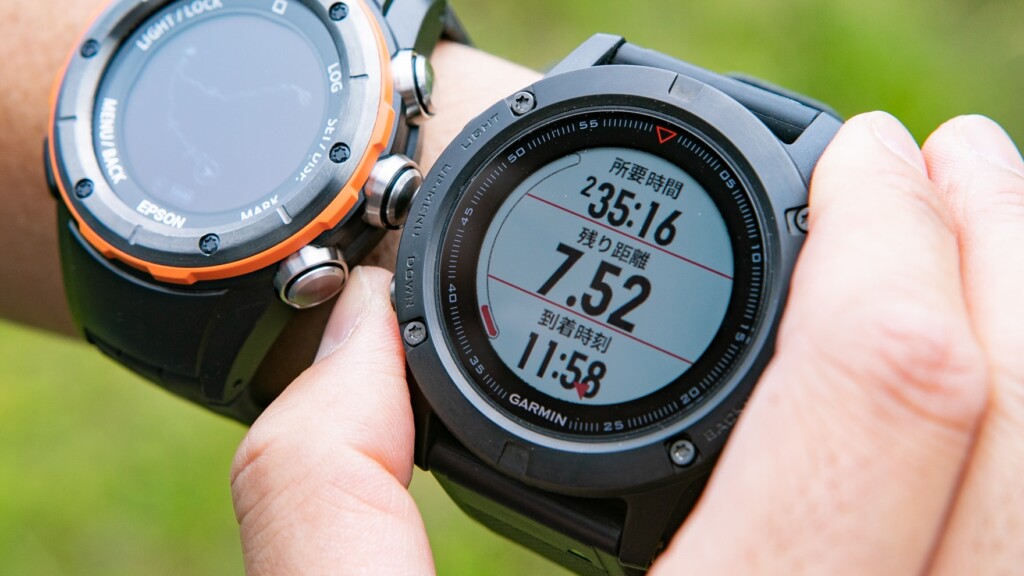
![RAVPower 6700mAh Mobile Battery Fast Charging (Minimum Lightest / As of the end of July 2018) Mobile charger, portable charger compatible with iPhone/Andorid etc. [18-month peace of mind guarantee] RP-PB060 with iSmart2.0 function (white)](https://images-fe.ssl-images-amazon.com/images/I/41xgZ3XCCRL._SS300_.jpg)
![[Casio] CASIO Smart Outdoor Watch Pro Trek Smart GPS equipped WSD-F20-BK Men's](https://images-fe.ssl-images-amazon.com/images/I/71XEAKZHhCL._SS300_.jpg)
![GARMIN Multi Sports Watch fenix5x Phoenix5x Sapphire Sapphire GPS Watch [Genuine Japanese Product] 010-01733-13](https://images-fe.ssl-images-amazon.com/images/I/81T7Z88U6yL._SS300_.jpg)
![[EPSON Wristable GPS for Trek] EPSON Wristable GPS for Trek Running Mountain Climbing GPS 3D Elevation Navigation MZ-500L](https://images-fe.ssl-images-amazon.com/images/I/91pZnWLsgML._SS300_.jpg)
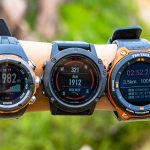 Purchase Guide: After trying out all CASIO, GARMIN, and EPSON, we found out the best solution for outdoor watches with GPS for each purpose [Part 2]
Purchase Guide: After trying out all CASIO, GARMIN, and EPSON, we found out the best solution for outdoor watches with GPS for each purpose [Part 2]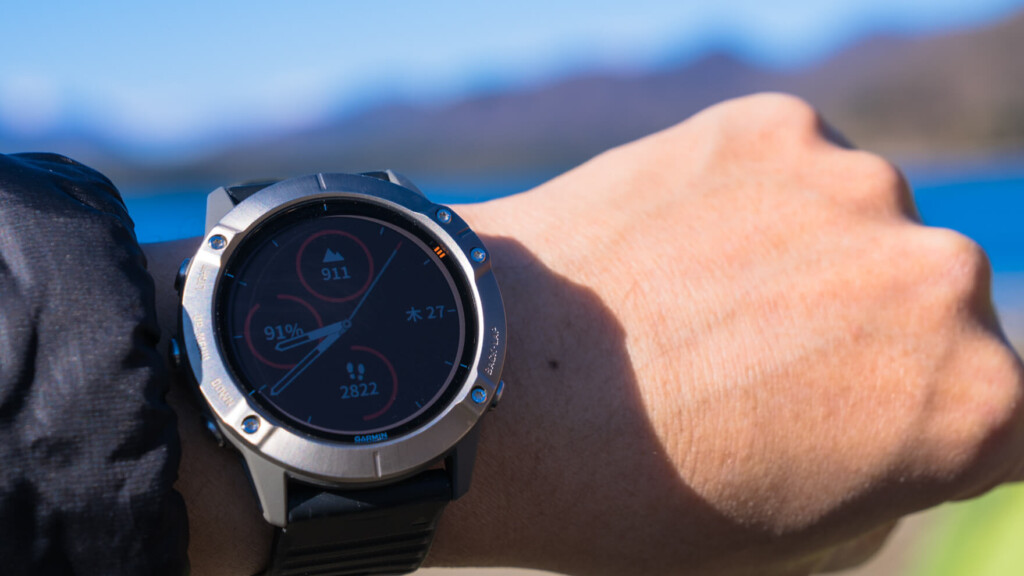 Review: Garmin Fenix 6X Pro Dual Power I've been waiting for this. Outdoor smartwatch that satisfies the desires of all athletes and weekend adventurers
Review: Garmin Fenix 6X Pro Dual Power I've been waiting for this. Outdoor smartwatch that satisfies the desires of all athletes and weekend adventurers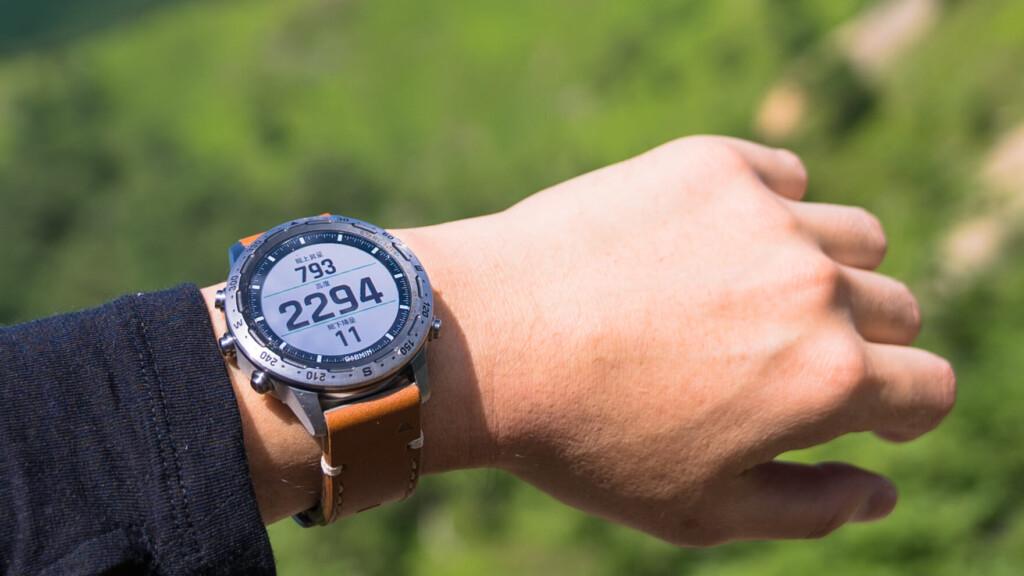 Review: Garmin MARQ Expedition The unique pleasure that resides in Garmin's finest outdoor smartwatch, which cannot be measured by specs alone.
Review: Garmin MARQ Expedition The unique pleasure that resides in Garmin's finest outdoor smartwatch, which cannot be measured by specs alone.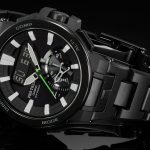 First Look: CASIO PRO TREK PRW-7000 "All-rounder" Pro Trek for greedy outdoor lovers
First Look: CASIO PRO TREK PRW-7000 "All-rounder" Pro Trek for greedy outdoor lovers